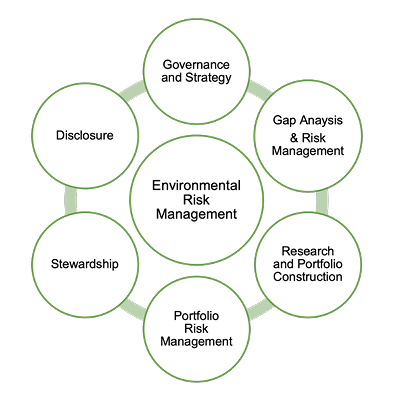
MAS Guidelines on Environmental Risk Management for Asset Managers
They are guidelines to enhance fund management companies’ and real estate investment trust managers’ management of environmental risk.
These guidelines set out MAS’ expectations on environmental risk management for all fund management companies and real estate investment trust managers.
The guidelines cover:
- Governance and strategy
- Research and portfolio construction
- Portfolio risk management
- Stewardship
- Disclosure of environmental risk information
Who do the guidelines apply to?
These Guidelines apply to all holders of a capital markets services licence for fund management (“LFMC”) and real estate investment trust (“REIT”) management, and to registered fund management companies (“RFMC”).
So, if you are one of the above you must comply, with the exception, the Guidelines would generally be applicable to asset managers that have discretionary authority over the investments of the funds/mandates that they are managing. Conversely, for asset managers that do not have discretionary authority over the investments of the funds/mandates, the Guidelines would not apply.
So, your assessment (gap analysis) of your business is critical to see if you can fall under this exemption or not.
How long do firms have to adhere to the requirements?
The MAS mandatory deadline was June 2022, as such the deadline has passed an all-asset managers must have considered their obligations in respect of Environment Risk Management and be able to evidence this.
So, you should be able to evidence your compliance or can explain why not!
What should our gap analysis/risk assessment consider?
a. Governance and Strategy
Oversight in place of Environment Risk Management by Board and senior management.
A gap analysis is the starting point, asses the existing framework for managing Environment Risk Management risks.
An example is best practices or industry standards, as well relevant training for board and senior management on the Environment Risk Management subject. Policy and processes should be aligned, it should not be a simple “copy and paste” of an Environment Risk Management statement in to your compliance or risk manual. It needs to be embedded.
b. Risk Management
Create or embed in existing policies and procedures to assess, monitor and manage the Environment Risk Management risk like other risks (e.g., cyber).
A full business flow gap analysis is required, firm level and portfolio level.
What is your firm’s exposure? You will need to define the risk factors and like any risk assign a rating of material etc and consider source data such as carbon calculators and other climate related data points. Similar with financial risk and stress testing, you should consider scenario modelling and risk assessments relating to Environment Risk Management.
As part of risk factors actually defining what environmental risk includes, the following three risk channels are included:
- Physical risk arises from the impact of weather events and long-term or widespread environmental changes.
- Transition risk arises from the process of adjustment to an environmentally sustainable economy, including changes in public policies, disruptive technological developments, and shifts in consumer and investor preferences. For instance, the transition to a low-carbon economy can impair the profitability of companies in carbon-intensive businesses
- Reputational risk can arise when asset managers invest into companies that carry out business activities which have a negative impact on the environment. Negative perception of asset managers’ business practices can adversely affect their abilities to maintain or grow their assets under management
What KPI or metrics are in place? Or need to be in place?
You will need to define the risk and measures to mitigate the Environment Risk Management risk and ensure clear reporting and oversight in place. Will this form part of a quarterly compliance report? Or will it be a bi-annual review or annual review?
c. Disclosures
Appropriate disclosures with ongoing periodic regular review to improve detail, clarity, and actual relevance to the context.
Undertake an assessment against Task Force on Climate-related Financial Disclosures (TCFD) to establish any gaps with your firm.
Consider any market industry best practices or known “good” elements.
Ensure there is document end to end clarity relating to Environment Risk Management and relevant risk related points looped back to ensure no gaps.

High Level Environmental Risk Assessment
Assuming your firm is applicable (e.g., fund management and discretionary authority) this is starting point for an assessment.
| Category | Brief Overview |
| Governance and Strategy: | The Board of Directors (“Board”) and senior management play critical roles in determining the asset manager’s strategies, business plans and product offerings. These include identifying environmental risks and opportunities over the short and long term and evaluating the actual and potential impact of these risks and opportunities on the asset manager’s strategies, business plans and products. These should also take into consideration the asset manager’s responses to the objectives set out under international agreements such as the Paris Agreement, as well as national policies. In this regard, the Board and senior management should set the tone and articulate the asset manager’s approach on environmental risk management for the different asset classes it invests in and investment strategies that it employs.
-Key messages identify, address, and monitor material environmental risks linked to certain existing risk management regulations in Singapore. Accordingly, the board of directors and senior management should oversee the integration of environmental risk into existing risk management frameworks (e.g., approve ES risk management, related policies etc) -It is clear senior managers are responsible for producing, developing, implementing and on an ongoing basis reviewing the framework. They must factor an escalation step for managing environmental risk and through resources assessment ensure this is appropriate. -Delegation of duties to a committee, is permitted, asset managers need not assign a specific director and officers for Environment Risk Management only, it is recommended a senior manager has this in their remit but linking back to size and structure of the firm. -Compliance Monitoring Plan to capture Environment Risk Management as an ongoing assessment requirement. -A Standalone Environmental Risk Management Policy to echo tone from the top. |
| Research and Portfolio Construction: | Asset managers should highlight sectors most exposed to environmental risk, and developed policies to exclude, limit or manage investment in these sectors. These policies could range from conditional acceptance (e.g., Requiring investee companies to demonstrate they have credible transition plans aligned with recognised decarbonisation pathways) to outright prohibition (e.g., not investing in companies that are engaged in environmentally damaging activities, or which derive a significant proportion of their revenues from such activities). Such policies typically apply to actively managed funds and could be a default for segregated mandates as well.
– embed environmental risk factors as core elements in research and portfolio construction processes and cross check to international standards and frameworks, especially when considering transition and physical risks at an individual asset and/or portfolio level. (For example, fixed income investments, Environment Risk Management indicators and external data providers, as well as information provided by the issuer, permitting an end-to-end view of environmental risk). -reflection is key, asset managers must revert back to their mandate, the limits that the customers may set on exposure to specific types or sectors of activities (e.g., limits in fossil fuel industry etc). -No data no excuse! If unable to find relevant ES data for research and portfolio construction purposes due to array of factors and due to assessment of those disclosure frameworks. Publicly available data to identify specific risk can be used, opposed to detailed data. |
| Portfolio Risk Management: | Environmental risks are wide ranging and constantly evolving. Asset Managers should put in place appropriate processes and systems to systematically monitor, assess, and manage their potential and actual impact on individual investments and portfolios on an ongoing basis. To support this effort, there must be clarity of roles and responsibilities within the Asset Managers. This is not a one-off task, like all risk management is clear this is an ongoing requirement.
-material potential and actual impacts of environmental risk on both individual investments and portfolios on an ongoing basis. – evolve through ongoing assessment capabilities in scenario analysis to evaluate portfolio resilience through scenario modelling (e.g., rain fall increased or decreased, temperature increases to sea level rise). – bolster the asset management employee’s awareness to enhance wider micro and macro by providing environmental risk management training to staff. |
| Stewardship | Stewardship is one of the key levers for Asset Managers to effectively manage the environmental risk in their funds/mandates and achieve long-term performance for their customers. Direct engagement with investee companies can improve their environmental risk profiles by shaping the companies’ behaviour towards more sustainable policies and practices.
-Asset managers should pro-actively shape the corporate behaviour of its investee companies through engagement, sector collaboration and proxy voting. -Through the governance at the asset manager, clear strategies for proactive engagement include raising environmental issues with investee companies to increase their direct or in direct awareness of related risks. Considerations should be given to opportunities and independently gathering information, to further supplement investee companies’ own environmental risk disclosures. -Although stewardship is not a strict rule or detailed laid down by MAS, asset managers should ensure they have a clear approach at the outset and ongoing basis but does therefore provide flexibility to determine appropriate stewardship approaches. -A key reminder from MAS is the applicability of the practices in the guidelines as they work to bolster their resilience to environmental risk in a way that is commensurate to their size, nature of activities and risk profile of the Asset Manager. So, if a smaller asset manager, consideration could be given to both proxy voting and collaborating with other investors can be cost-effective approaches to stewardship. |
| Disclosure: | Asset managers must disclose:
-the environmental risk defined by senior management strategy to stakeholders. -To assist compliance, it is suggested asset managers refer to international reporting frameworks (e.g., TCFD Recommendations) drafting and issuing such disclosures. Boards and senior management can consider the frequency and/or vessel for the disclosure, for example, ER disclosures could be included in their annual reports or sustainability reports, investor reports. |
Source MAS reference material to be considered:
MAS Guidelines-on-Environmental-Risk-Management-for-Asset-Managers – December 2020
MAS Information-Paper-on-Environmental-Risk-Management-Asset-Managers – May 2022
To learn more about these guidelines, get in touch with our APAC Compliance Solutions team today.